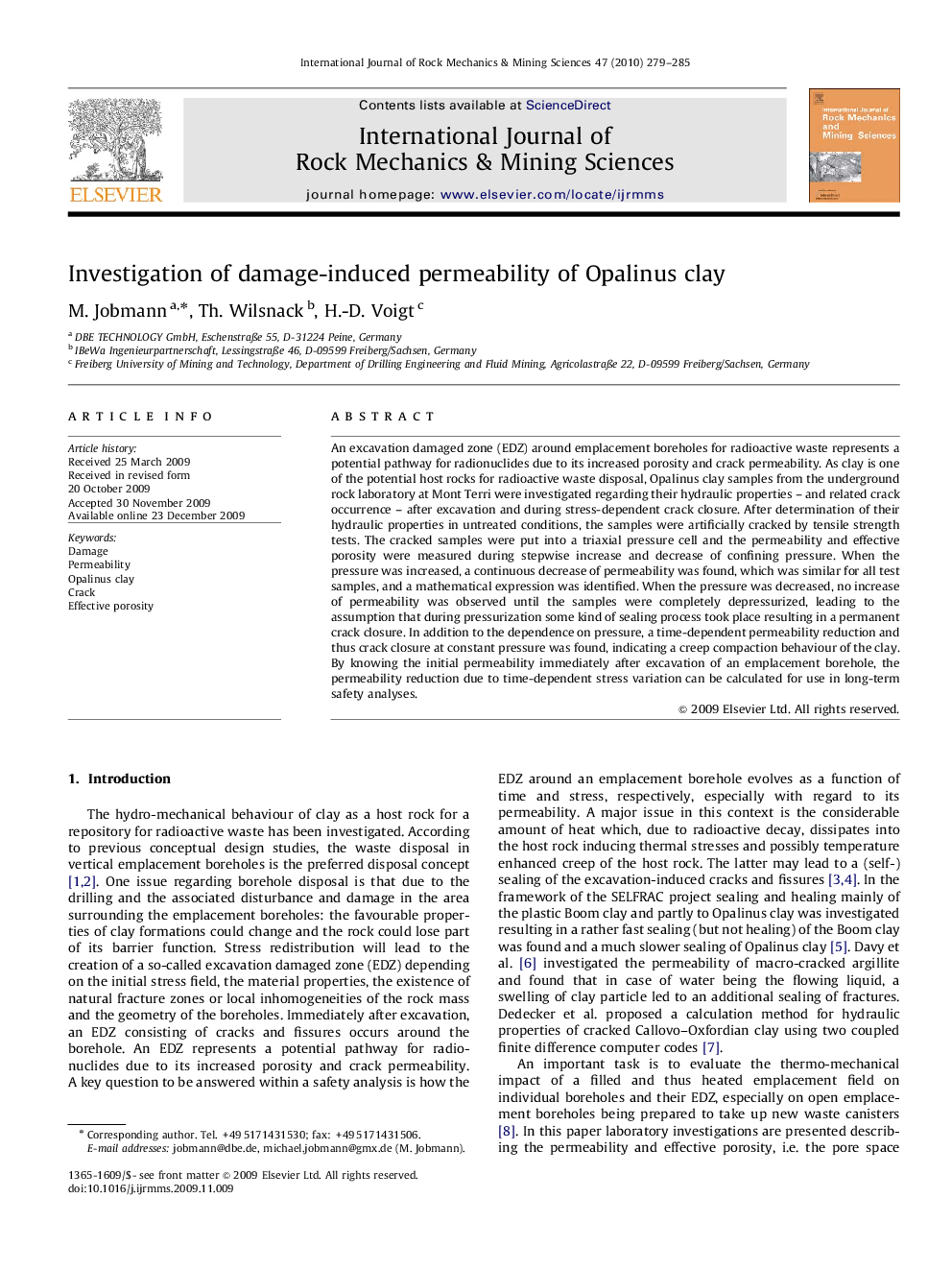| Article ID | Journal | Published Year | Pages | File Type |
|---|---|---|---|---|
| 809909 | International Journal of Rock Mechanics and Mining Sciences | 2010 | 7 Pages |
An excavation damaged zone (EDZ) around emplacement boreholes for radioactive waste represents a potential pathway for radionuclides due to its increased porosity and crack permeability. As clay is one of the potential host rocks for radioactive waste disposal, Opalinus clay samples from the underground rock laboratory at Mont Terri were investigated regarding their hydraulic properties – and related crack occurrence – after excavation and during stress-dependent crack closure. After determination of their hydraulic properties in untreated conditions, the samples were artificially cracked by tensile strength tests. The cracked samples were put into a triaxial pressure cell and the permeability and effective porosity were measured during stepwise increase and decrease of confining pressure. When the pressure was increased, a continuous decrease of permeability was found, which was similar for all test samples, and a mathematical expression was identified. When the pressure was decreased, no increase of permeability was observed until the samples were completely depressurized, leading to the assumption that during pressurization some kind of sealing process took place resulting in a permanent crack closure. In addition to the dependence on pressure, a time-dependent permeability reduction and thus crack closure at constant pressure was found, indicating a creep compaction behaviour of the clay. By knowing the initial permeability immediately after excavation of an emplacement borehole, the permeability reduction due to time-dependent stress variation can be calculated for use in long-term safety analyses.
